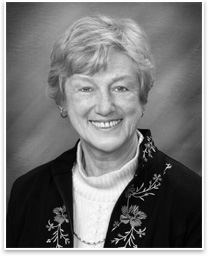
| Beverly Foit-Albert, AIA
Education: BArch from Cornell University; MArch from the University at Buffalo, State University of New York; PhD in human sciences from Saybrook in California. Environmental psychology was my specialty. Years in practice: I started my company in 1977, but I’ve been in practice much longer that that. I actually graduated from Cornell in 1961 and started working. I got my architecture license in 1965. Becoming an architect: I grew up in a household where my father was an architect. I think I always knew that I wanted to go into architecture. I worked in his office during the summer when I was 15 and then after graduation from Cornell. I got married in the ‘60s and had children, then went back to work for a local architect. I started my own firm a few years later out of my home. It became a real business in 1977 when I moved out of the home and rented office space. Now we have two offices, one in Albany and one in Buffalo. We just have closed our office in Watertown and we’re trying to start an office in New York City. Inspiration for China’s Sacred Sites: I have always loved Eastern philosophy. In 1989, I was an exchange scholar to China from the University at Buffalo, SUNY. I was going to teach for six weeks, but Tiananmen Square happened. I didn’t get to teach, but I saw the extraordinary history and the sites around Beijing. In 1995, I was an exchange scholar from the university to China again. I got a grant from the American Philosophical Society and went back and took a photographer with me, and we documented many of the beautiful and secluded historic sites in China. I met with a scholar from Beijing with whom I’ve worked before, and we started working together on the book. Favorites place to visit: Mexico: because of the archaeology and the Mayan civilization, the Olmecs, the Aztecs. I really like archaeological and historic sites. And that was the first place I traveled out of this country when I was younger, so that always leaves wonderful memories. I like to travel to India as well, and we just went to Burma two years ago. I really want to go back to China to revisit these sites because China has changed a lot. I was there two years ago, but I was only in the southern province of Yunnan. I want to take members of my family back to some of the sites that they didn’t get to visit. On historic preservation in the U.S.: I’ve always thought there was a middle road to take, and I think we have done a very good job in terms of preservation in the U.S. We have the Department of the Interior standards and we have state historical preservation offices. I think there’s been a lot of oversight and a number of correct moves in the direction of preservation restoration. Some sites like steel plants or grain elevators in Buffalo are tough. Those sites need either to have a very correct adaptive reuse or there’s got to be enough money put into these sites to really turn them around. In some areas of the country, it isn’t happening. One building that we have here, the Henry Hobson Richardson-designed Buffalo Psychiatric Building, has been granted the money for rehabilitation by the governor, but it’s a very slow and ongoing process. I think that sometimes we need to be a little bit more liberal in the way that we think of reuse of buildings. On the other hand, some buildings need to be memorialized in a proper way, but I think we’ve done a good job with that. Next emphasis for preservation: I think the real historic preservation has to happen in places like China. Many things are cyclical and down the road, the Chinese will come to realize—as will other countries—the wonder of their existing historic sites. That’s where historic preservation has got to go. We’ve got to save these remarkable and beautiful building complexes and these extraordinary geographies. Greatest professional achievement: Well, when the HHR building is adaptively reused and restored, I will consider that the greatest achievement, but that hasn’t happened quite yet. I think it’s simply being in this profession and training other young architects. On teaching: I took early retirement in 2000 so I could attend to my business. I taught for quite some time and worked with historian Reyner Banham. I was his technical assistant at the School of Architecture and Environmental Design, as it was called then. I learned about Buffalo, its grain elevators and industrial buildings, and went out in the field with him and the students. Teaching was terrific. I really enjoyed it. Actually, I was one of the first teachers at the new School of Architecture in 1969 and taught history of architecture, so I’ve had nice longevity with the school and with the university. I had lots of things going on. It was a pleasure though, having all of these students over the years. Buffalo legacy: There are buildings in Buffalo that my father designed, like D’Youville College, so that’s rather nice. And, when my kids were younger, they worked in the office doing things like running prints and going to the bank for petty cash. Now I have one son in the profession who works with us. I like being in a city where it’s not growing at a fantastic speed, because I think we get a chance as architects to make a difference in those cities. So, that’s an achievement, I think: staying in these areas that need the professionalism of the architects who live here. I think that’s very important. |
||
Copyright 2007 The American Institute of Architects. All rights reserved. Home Page |
||
news headlines
practice
business
design

